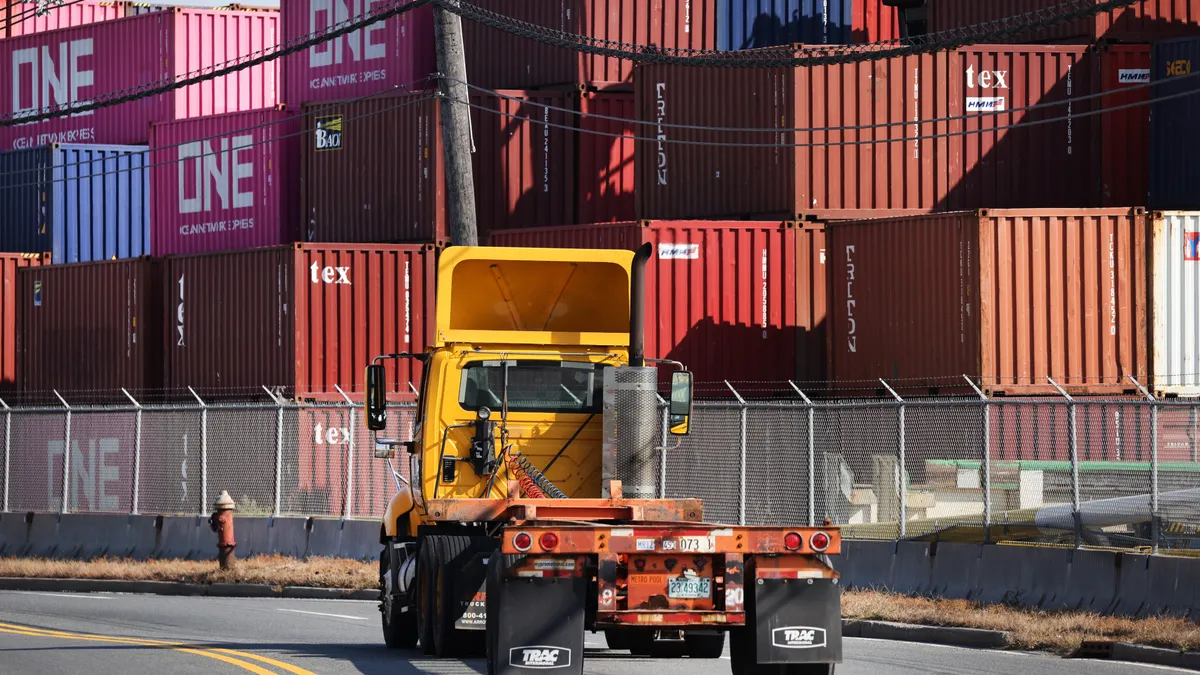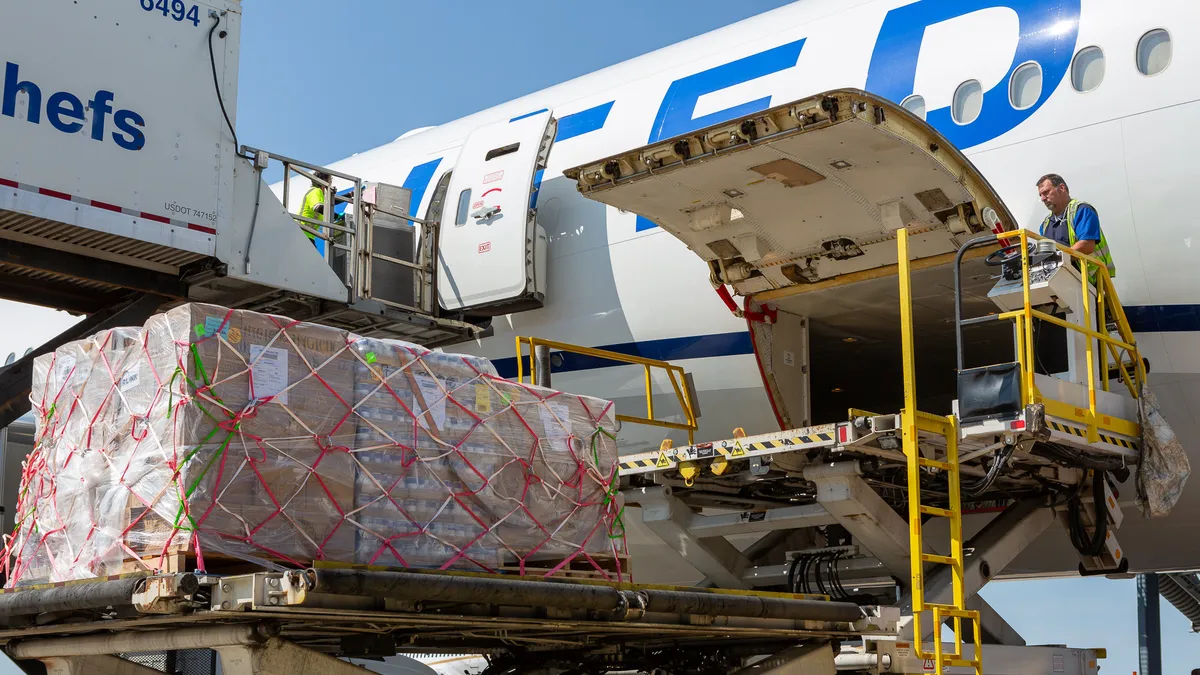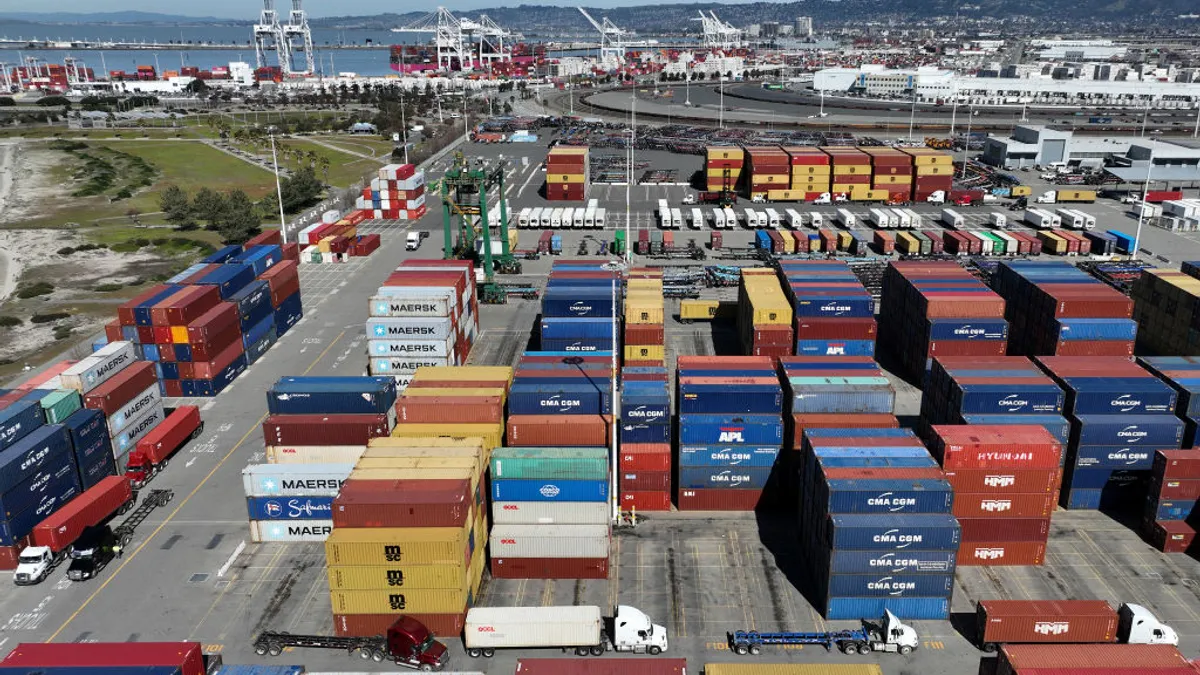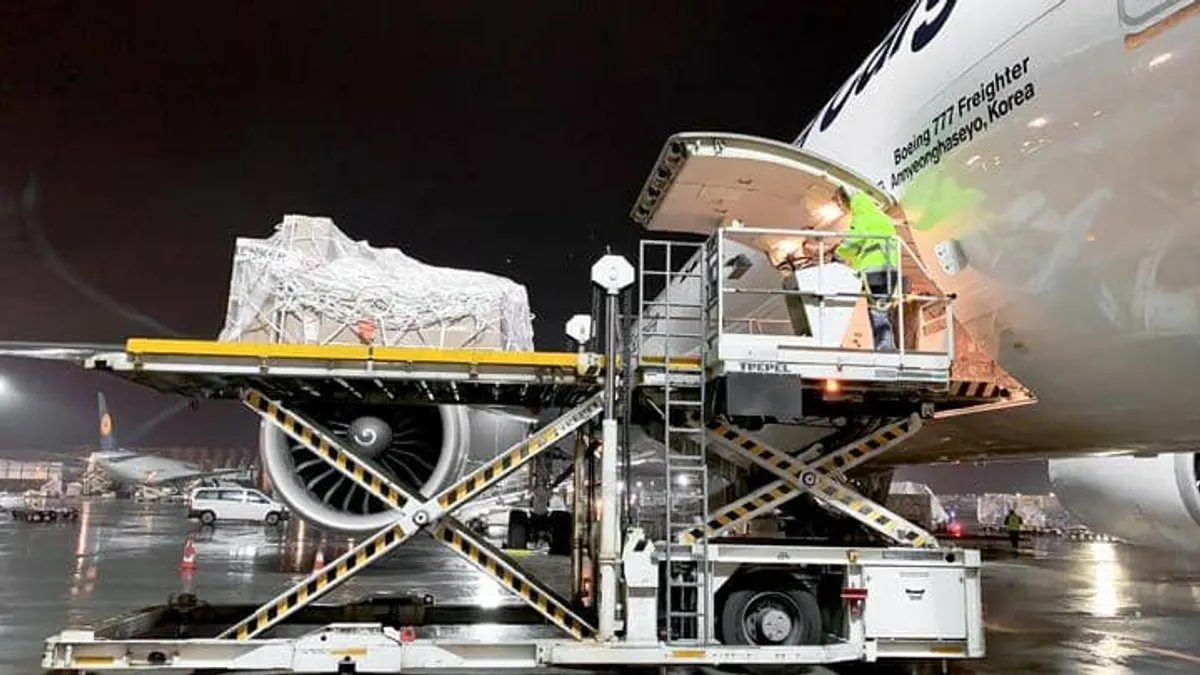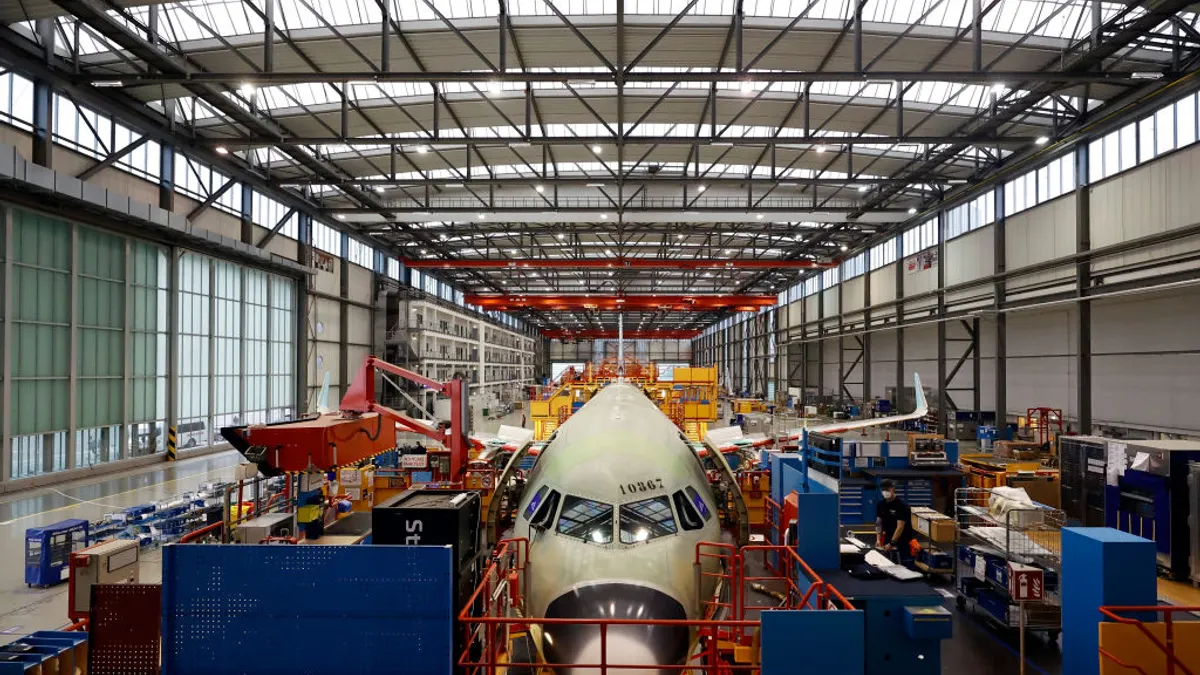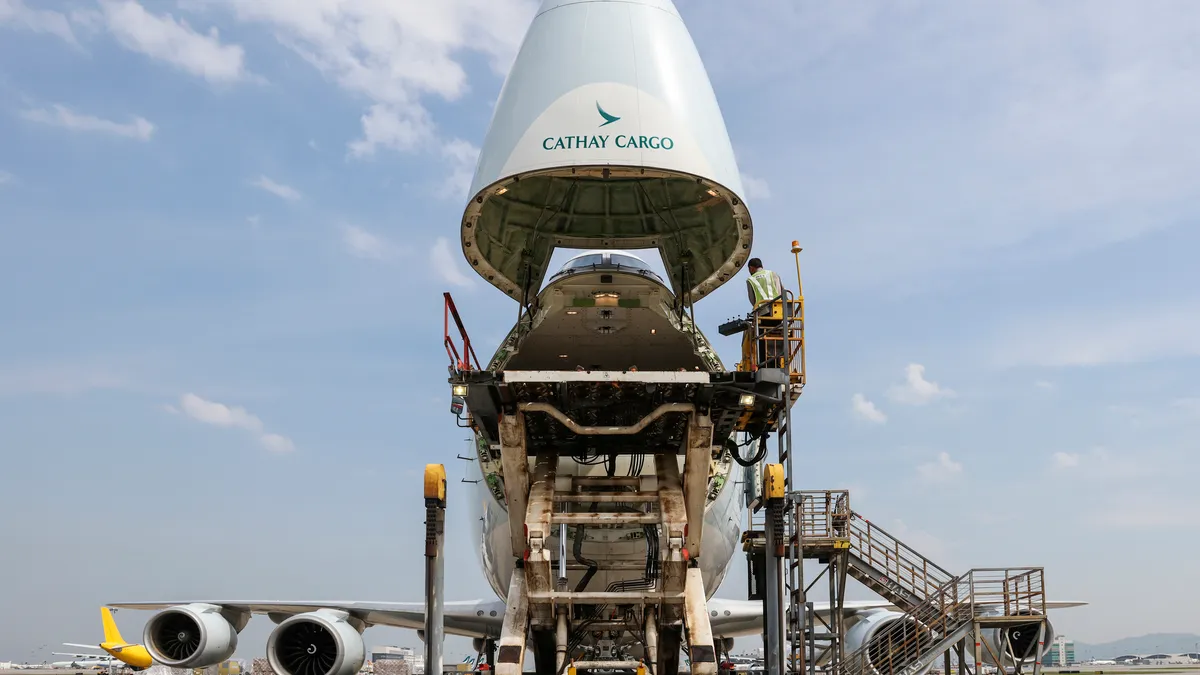Whether dealing with an upset customer or a delayed shipment, logistics managers spend a lot of their time putting out fires.
But spending the day overcoming hurdles becomes time consuming, especially when logistics managers have to get product “where it needs to be, regardless of the fires that are burning around us,” said Mike Reiss, managing director of supply chain at consulting firm EY. In turn, logistics professionals must step back to review strategy and the best ways to use data, technology and talent to best manage their supply chains.
Here are four ways logistics managers can gain control of their supply chains to keep cargo moving.
1. Closely watch freight market indicators
Market conditions have never been static for logistics managers, said Bryan Gross, principal of operations transformation at consulting firm PwC. Pandemic-related disruptions, rising costs and tariff impacts are just a few of the challenges logistics managers have had to overcome in recent years.
To mitigate these hurdles, it is vitally important to keep customers informed of marketplace developments, according to Doug Frank, SVP of transportation management and procurement at Geodis Americas.
Frank said that Geodis keeps a close eye on available freight capacity and rates and provides monthly updates to shippers. If Geodis gets word from a carrier that a rate increase is imminent, the 3PL aims to give shippers ample notice so they can forecast and budget for the rate hike.
Some shippers use market intelligence to balance spot and contract rates.
“There's a lot better discipline on playing the spot,” Reiss said, noting that some shippers have a portion of freight never put on contract. For instance, dry van spot rates have trended down since January due to excess capacity, creating appealing rates for shippers.
Shippers are also considering contract renewals more frequently. Instead of securing a one-year contract and not reconsidering until it’s time for renewal, shippers may look at the contract three to six months ahead of its expiration to think about the next cycle, Reiss said.
2. Optimize networks and routes more frequently
Network optimization isn’t a new practice for supply chain leaders, but it’s currently “top of mind” for logistics managers as global trade trends continue to impact logistics management faster than ever before, said Reiss.
In the past, companies used to optimize their networks about every five years. Now, logistics managers should examine networks, production locations and the physical infrastructure of their companies every six months, Reiss advised. Using technology, such as digital twins, can help execute the task more frequently.
“These last few years have taught us that even the best plans tend to fail."

Paolo Nibioli
VP of supply chain at MacDermid Enthone Industrial Solutions
Similarly, freight rates are also changing at an accelerated pace. It used to take six months to a year for market pressure to spike rates, but now, the market changes within weeks, Reiss said.
Rapid change means shippers need to assess and own their route networks, regardless of whether they have a private, dedicated or for-hire fleet, or use a 3PL, he added.
Depending on what’s discovered during network and route optimization, it may make sense to ship or consolidate freight in different ways. Shippers could consolidate parcels into less-than-truckload shipments, or from LTL to truckload to save costs, Frank said. A shipper could also use cross-docking to reduce freight handling and mitigate costs, or transport cargo via rail instead of truck.
Regardless of the choice made, it’s essential for shippers to have a plan B baked into the network, said Paolo Nibioli, VP of supply chain at MacDermid Enthone Industrial Solutions.
“These last few years have taught us that even the best plans tend to fail,” Nibioli said.
3. Have real-time and predictive freight visibility
Many businesses have adopted real-time transportation visibility since the pandemic, with others doing so even earlier with the proliferation of e-commerce. The transparency allows logistics managers to spot any potential issues in real time, "but this reactive approach offers limited long-term value,” Gross said.
Instead, Gross advises companies to take historical cost and movement data, analyze it to identify trends and then use the information to forecast.
“But this reactive approach offers limited long-term value."

Bryan Gross
Principal of operations transformation at PwC
With predictive visibility, logistics managers can anticipate challenges that may arise in the future, like a shipment delay due to weather or a bottleneck creating delays at the loading dock.
Being proactive rather than reactive is essential for logistics managers, Frank noted, adding that its “a lot easier said than done.”
4. Develop a tech-savvy logistics workforce
Leveraging data and technology in logistics is no longer optional, as evidenced by a McKinsey report.
According to a McKinsey & Co. report published in 2023, which surveyed 250 logistics leaders, 56% of CPG and retail shippers expect to increase their investments in logistics tech. The figure is even higher for advanced industries at 72%.
But shippers need a workforce to support those tech advancements, Gross said, recommending hiring talent with technological expertise and upskilling current employees. Companies can also offer mentoring programs that pair tech-savvy employees with non-technical staff.
Meanwhile, tech tools, such as transportation management systems, are “making logistics management easier and faster for industry leaders,” Nibioli said. TMS’ help by consolidating logistics data and reducing interfaces when booking transportation.
When it comes to more advanced tech, “we're going to have to rely on AI,” Frank said. For 3PLs or shippers contracting fleets directly, AI can help assign carriers, receive and enter orders, and plan shipments — possibly without human intervention, according to Frank.
“It’s a very powerful tool,” he said.



